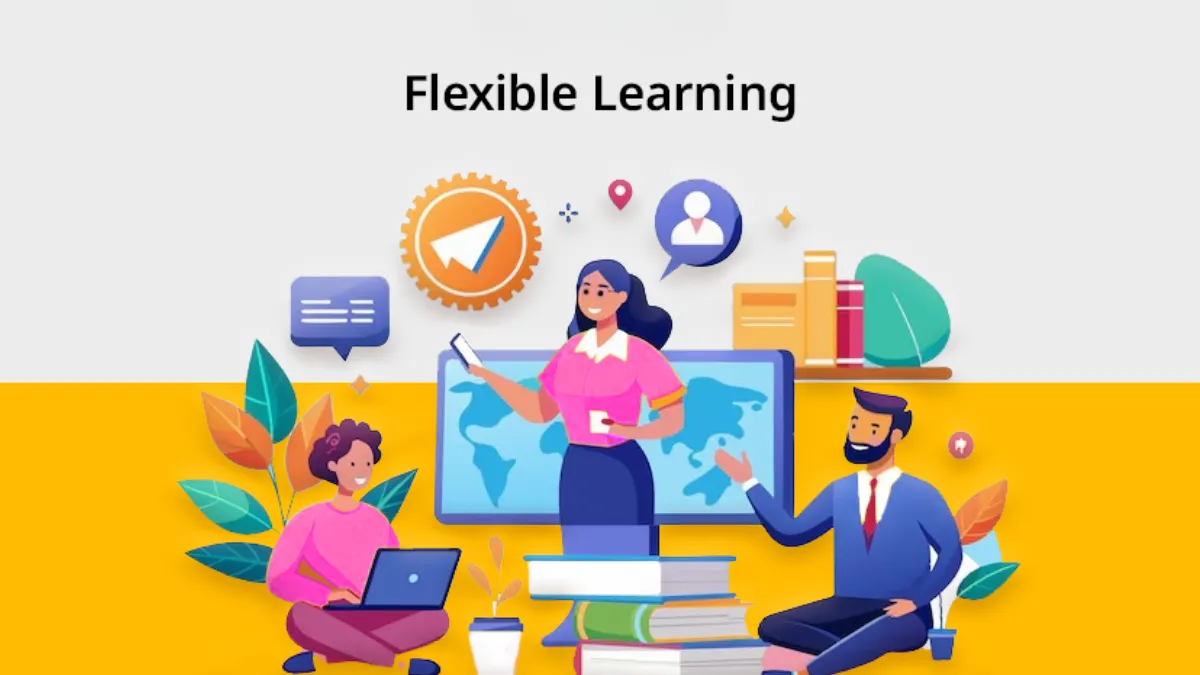Flexible learning has become one of the most powerful trends in modern education, offering students the freedom to learn at their own pace, in their own place, and in a way that suits their unique needs. As technology advances and the world becomes more fast-paced, the demand for learning options that fit into busy lifestyles has grown rapidly. Flexible learning provides solutions for students, professionals, and lifelong learners who want to balance education with work, family, and other commitments.

What is Flexible Learning?
Flexible learning is an educational approach that allows students to control various aspects of their learning experience, including the time, pace, and place of study. It removes the rigid structures of traditional classrooms and gives learners the ability to tailor their education according to personal needs and goals.
Key Features of Flexible Learning
- Self-Paced Study – Students can progress through lessons at a speed that suits them, ensuring better understanding.
- Choice of Study Environment – Learners can study at home, at a library, or anywhere that feels comfortable.
- Access to Resources Anytime – Study materials are available 24/7, giving students the freedom to learn when they are most productive.
- Variety of Learning Methods – It includes videos, interactive modules, recorded lectures, and digital assessments.
Advantages of Flexible Learning
1. Convenience and Accessibility
Students can study from any location, reducing the need for commuting. This is particularly beneficial for those living in remote areas.
2. Personalised Learning Experience
Flexible learning allows students to focus on topics they find challenging while moving quickly through concepts they already understand.
3. Balance Between Work and Study
It is an excellent option for working professionals who wish to upgrade their skills without leaving their jobs.
4. Cost-Effective Option
Without the need for physical classrooms, transportation, and accommodation, flexible learning often reduces costs significantly.
5. Inclusivity for All Learners
People with disabilities, parents, or those with busy schedules can still access quality education without barriers.
Challenges of Flexible Learning
1. Need for Self-Motivation
Without structured classroom environments, students must be disciplined and self-driven.
2. Limited Social Interaction
Some learners may miss the social aspect of in-person classes.
3. Dependence on Technology
Reliable internet and devices are essential for accessing learning materials.
Tips for Success in Flexible Learning
- Create a Study Plan: Set specific times for studying each day to stay consistent.
- Set Goals: Identify what you want to achieve weekly or monthly to stay on track.
- Eliminate Distractions: Choose a quiet environment to focus better.
- Take Regular Breaks: Short breaks help refresh the mind and improve productivity.
- Stay Engaged: Participate in online discussions and complete all assignments on time.
How Flexible Learning Helps Career Growth
Flexible learning makes it possible for professionals to gain new skills while continuing to work. It allows individuals to pursue certifications, degrees, and training programs that enhance their careers without interrupting their jobs. This approach is particularly valuable in industries that constantly evolve and require continuous skill development.
Different Modes of Flexible Learning
- Online Self-Paced Courses – Learners access materials and complete tasks on their own schedule.
- Blended Learning – Combines online lessons with occasional in-person activities.
- Open Learning Resources – Free study materials available to anyone interested in self-education.
- Modular Courses – Students can pick specific topics or units to study without committing to full programs.

Future of Flexible Learning
As digital technology continues to advance, flexible learning will become even more innovative. Features like virtual classrooms, interactive simulations, and artificial intelligence-based learning tools will make education more engaging and personalized. It is expected that flexible learning will play a major role in shaping the future of education worldwide.
Also Read: Online Education – A Complete Guide to Learning Anytime, Anywhere
Conclusion
Flexible learning is transforming education by making it more adaptable, inclusive, and convenient for people of all ages. It removes barriers to learning and gives students control over their education. While it requires discipline and self-motivation, the benefits are immense, especially for individuals balancing multiple responsibilities. With proper planning and dedication, flexible learning can be a powerful way to achieve academic and professional success.
FAQs
1. What does flexible learning mean?
It is an educational approach that allows students to learn at their own pace, time, and location.
2. Who benefits most from flexible learning?
Working professionals, parents, people in remote areas, and those with busy schedules benefit greatly.
3. Does flexible learning require special technology?
A computer, smartphone, and internet connection are usually sufficient for most courses.
4. Is flexible learning effective for career growth?
Yes, it allows professionals to gain new skills and certifications without leaving their jobs.
5. What are the main challenges of flexible learning?
It requires self-motivation, reliable technology, and the ability to manage time effectively.
6. Can children benefit from flexible learning?
Yes, with proper guidance, children can also take advantage of flexible learning options.
7. Is flexible learning more affordable?
It can be more cost-effective since it reduces expenses for travel, accommodation, and physical materials.
8. How can students stay motivated?
Setting goals, having a study schedule, and tracking progress can keep students engaged.
9. Does flexible learning replace traditional education?
Not entirely; it complements traditional learning by providing more options for students.
10. Is flexible learning available worldwide?
Yes, online platforms and digital resources make it accessible to learners everywhere.



